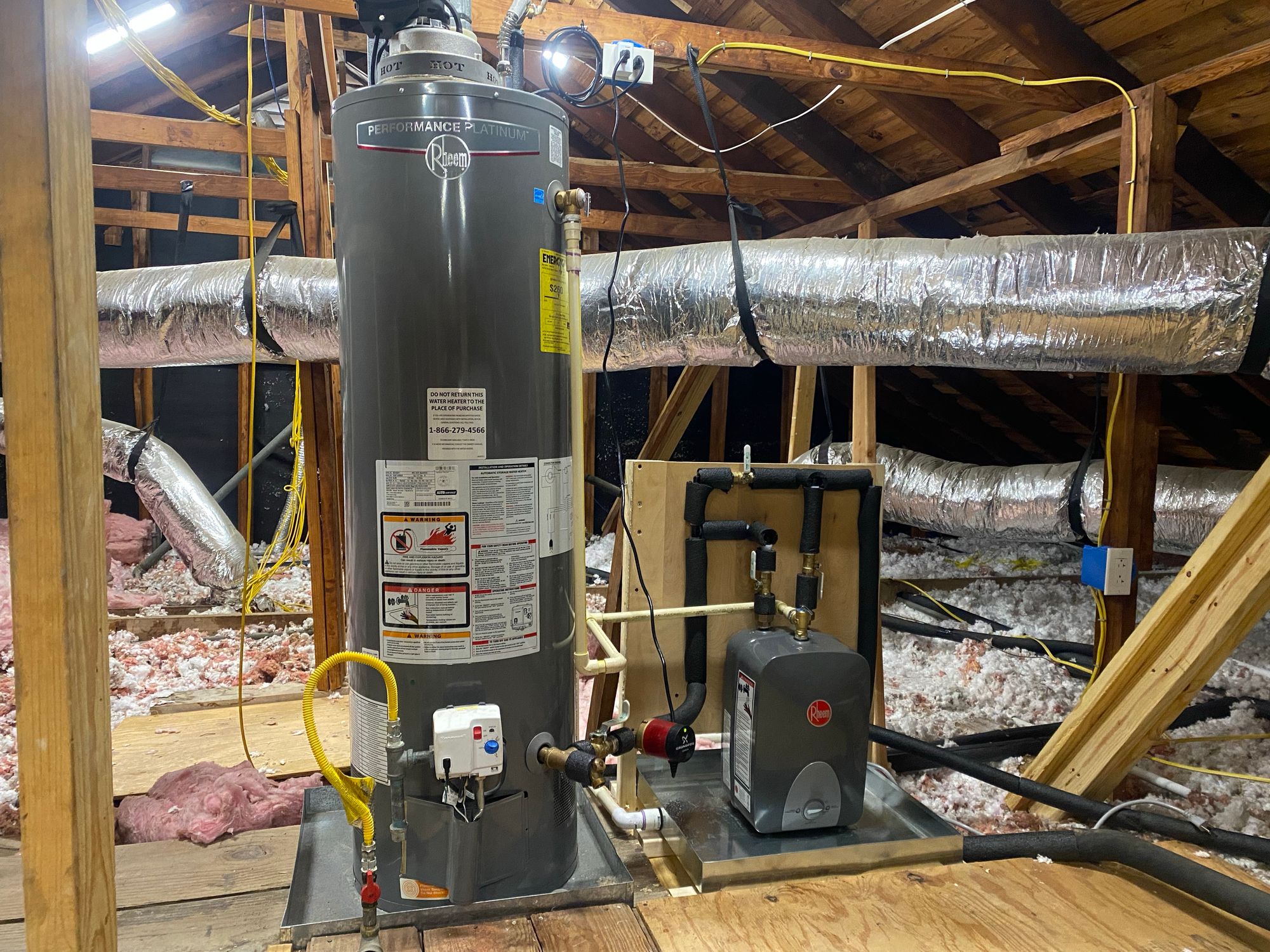Yes, a tankless water heater can be installed in an attic. Ensure proper ventilation and temperature control to prevent freezing.
Tankless water heaters offer efficient heating solutions for modern homes. Many homeowners consider installing them in unique spaces, such as attics, to save floor space. Attics can provide a convenient location, but specific conditions must be met. Adequate insulation and ventilation are crucial to maintain optimal performance.
Cold temperatures can affect the unit’s functionality, making it essential to monitor environmental factors. Proper installation helps ensure longevity and efficiency. Understanding local building codes and consulting with professionals will lead to a successful setup. This guide will explore key considerations for installing a tankless water heater in your attic.

Credit: www.waterheatersnow.com
Page Contents
Introduction To Tankless Water Heaters
Tankless water heaters provide hot water on demand. They save space and energy. These systems heat water directly without a storage tank. This means no waiting for hot water.
One major benefit is their energy efficiency. They only use energy when hot water is needed. This can lead to lower energy bills.
Another advantage is their long lifespan. Tankless heaters often last longer than traditional ones. Regular maintenance can extend their life even more.
Space considerations are crucial. Installing a tankless water heater in the attic can save room. Ensure proper ventilation and access for maintenance.
Always check local building codes. Proper installation helps avoid potential issues.
Attic Installation Basics
Attic installation of a tankless water heater has its benefits. Space-saving is a major advantage. It frees up room in the main living areas. Reduced noise is another perk. Tankless heaters are quieter than traditional ones.
Challenging factors exist for attic placement. Accessibility can be an issue during maintenance. Heat exposure may affect efficiency and lifespan. Proper ventilation is essential to prevent overheating.
| Pros | Challenges |
|---|---|
| Space-saving | Accessibility issues |
| Reduced noise | Heat exposure risks |
| Less visible | Need for ventilation |
Evaluating Attic Suitability
Evaluating the attic’s suitability for a tankless water heater is important. Check the structural requirements first. The attic must support the weight of the heater. Ensure proper ventilation is available. This helps maintain efficiency and safety.
Temperature and insulation are key factors. The heater works best in a temperature-controlled area. Insulation helps keep the heater warm in winter. Cold temperatures can cause the heater to malfunction. Make sure the attic has adequate insulation.

Credit: blog.networkprofile.org
Preparation For Installation
Installing a tankless water heater in the attic needs careful planning. Start by gathering the required tools and materials. You will need a wrench, screwdrivers, and a drill. Don’t forget the plumbing fittings and tape for sealing.
Safety is very important during installation. Always wear protective gear, like gloves and goggles. Make sure the area is well-ventilated. Check for electrical hazards before starting. Use a ladder that is sturdy and tall enough to reach the attic.
| Tools | Materials |
|---|---|
| Wrench | Plumbing fittings |
| Screwdrivers | Tape |
| Drill | Water heater unit |
Step-by-step Installation Guide
Mounting the heater needs a strong support structure. Ensure the attic floor can hold the weight. Follow the manufacturer’s instructions for proper placement. Use brackets to secure the unit in place.
Connecting water and gas lines is crucial for tankless water heaters. Use copper or PEX pipes for water connections. Make sure the gas line matches the heater’s requirements. Test all connections for leaks before proceeding.
Exhaust venting is essential for safe operation. Use PVC or stainless steel pipes for venting. Ensure the venting system meets local codes. Check for any obstructions that may block airflow.
Maintenance Considerations
Routine check-ups for a tankless water heater are very important. Regular inspections help ensure the unit runs smoothly. Check for any leaks or corrosion during these inspections. Clean the filters to maintain good water flow. This can prevent larger problems down the line.
Accessibility issues can arise with tankless water heaters in the attic. Limited space may make repairs difficult. Ensure that there is enough room to work around the unit. Consider installing the heater in a more accessible location if possible. This can save time and effort during maintenance.
Legal And Code Compliance
Installing a tankless water heater in the attic requires careful consideration of local building codes. Each area has specific regulations that dictate where heaters can be placed. Check with local authorities to ensure compliance.
Permits are often necessary before installation. These permits help confirm that all safety standards are met. Inspections are also required after installation. They ensure the unit operates safely and effectively.
| Requirement | Description |
|---|---|
| Building Codes | Regulations that dictate safe installation practices. |
| Permits | Official approval needed before starting the installation. |
| Inspections | Evaluation of the installation by a qualified inspector. |

Credit: southendplumbingllc.com
Real-life Installation Examples
Many homeowners have successfully installed tankless water heaters in their attics. This option saves space and provides efficient heating. Here are some real-life examples:
| Homeowner | Location | Experience |
|---|---|---|
| John Smith | Texas | Easy installation and great energy savings. |
| Mary Johnson | California | No noise and hot water quickly available. |
| Emily Davis | Florida | Saved space and reduced energy bills significantly. |
Homeowners appreciate the efficiency and convenience of tankless systems. Testimonials highlight quick access to hot water. Many enjoy the space-saving benefits in their attics.
Conclusion
Installing a tankless water heater in your attic can be beneficial, but it comes with specific considerations. Ensure proper ventilation and access for maintenance. Consult with a professional to evaluate your attic’s suitability for this installation. A well-placed tankless system can enhance energy efficiency and save space in your home.
